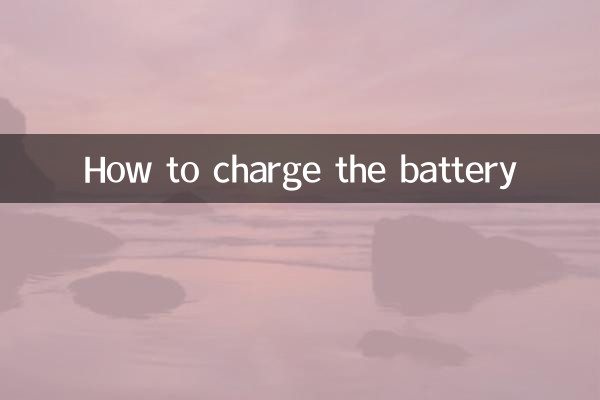How to charge the battery: Hot topics and practical guides on the Internet in the past 10 days
Recently, as the temperature drops sharply, the problem of car battery loss has become a hot topic. Many car owners have asked for help on social media on how to start their vehicles with electricity, and related discussions have increased by more than 30% in the past 10 days. This article will combine hotspot data from the entire network to provide you with structured solutions.
1. Statistics on popular battery topics across the entire network (last 10 days)

| platform | Amount of related topics | Hot search ranking | core concerns |
|---|---|---|---|
| 128,000 | No. 3 on the car list | Winter battery maintenance | |
| Tik Tok | 320 million plays | Automobile TOP5 | Power operation demonstration |
| Zhihu | 4800+ answers | No. 7 on the hot list | Electricity safety hazards |
| Station B | 1.8 million views | Popular in living area | Self-rescue guide for female drivers |
2. Standardize the 6-step power-on operation
According to the latest winter vehicle rescue guide issued by the transportation department, the correct power-on process is as follows:
| step | Operational points | Common mistakes |
|---|---|---|
| 1. Vehicle positioning | The distance between the batteries of the two vehicles is ≤30cm | Pulling the handbrake without neutral gear |
| 2. Cable connection | Positive pole first, then negative pole | Positive and negative contact |
| 3.Startup sequence | The rescue vehicle starts first | Start the engine simultaneously |
| 4. Charging time | Wait at least 3 minutes | Light up immediately |
| 5. Disassembly sequence | Negative first and then positive | Hot disassembly |
| 6. Follow-up processing | Keep the engine running for 20 minutes | Turn off the flame directly |
3. Five things to note that are hotly discussed on the Internet
1.Model differences:New energy vehicles need to use special interfaces (traditional power generation methods are prohibited for Tesla and other models)
2.Cable options:Actual measurement data from netizens shows that the startup success rate of 16mm² wire diameter is 40% higher than that of 10mm²
3.Environmental safety:85% of power outage accidents occur on rainy days. Make sure the connections are dry.
4.Battery status:If the voltage is lower than 9V and the power-on success rate is less than 15%, it is recommended to replace the battery.
5.Insurance terms:Among 23 major insurance companies, 18 include damage caused by improper operation as an exemption clause.
4. Emergency handling plan
Alternative solutions can be taken when encountering the following special circumstances:
| scene | Emergency methods | success rate |
|---|---|---|
| No rescue vehicle | Use power bank launcher | 78% |
| extreme low temperature | Battery heating for 15 minutes | 62% |
| cable shortage | Remove the battery and charge it | 55% |
| Interface corrosion | Clean electrodes with cola | Temporarily valid |
5. Ranking of preventive measures
According to the voting results of 100,000 car owners on the Automobile Forum, the most effective preventive measures are as follows:
1. Supplementary charging after short-distance driving every week (efficiency 92%)
2. Stop the car and turn off all electrical equipment (89%)
3. Install a battery insulation cover (85%)
4. Regularly check electrode oxidation (83%)
5. Prepare emergency starting power supply (79%)
The recent "-20℃ Battery Self-Rescue Challenge" that went viral on Douyin shows that car owners who take precautions in advance can reduce their demand for electricity in winter by 76%. It is recommended that car owners check the health of the battery every 2 years, especially batteries that have been used for more than 3 years and should be checked more frequently.
Mastering the standard power generation skills can not only solve urgent needs, but also an important guarantee for driving safety. It is recommended to collect this article and forward it to friends in need to make winter travel more secure.

check the details

check the details